Gotham Knights Review: "Excellent Action, Poor Optimization"
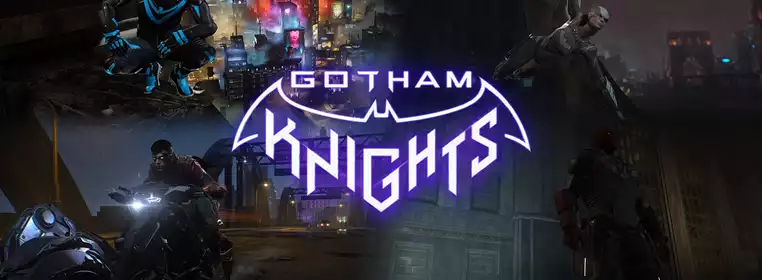
There's something almost poetic about Gotham Knights. The game is a story about a group of people who are inextricably linked with the legacy of someone else's work, and the pressure placed on them to live up to that potential. With Rocksteady's Arkham series of Batman games a near-constant presence in all conversations about Gotham Knights, can the folks at WB Games Montreal live up to the memory of their much-lauded predecessor, or will this game be labelled as yet another sub-standard spinoff?
The conversation around Gotham Knights since its announcement has been intriguing, if a little confusing. The game was first revealed at DC Fandome 2020, the event which also brought us our first look at Suicide Squad: Kill The Justice League. Five years after Batman Arkham Knight, suddenly we have two new DC games on the way. One is a game about the Bat-family, reeling from the sudden loss of Batman. The other is about the Suicide Squad fighting against a Justice League that has been brainwashed by Brainiac. In the strangest turn of events, the Suicide Squad game is a canonical sequel to the Arkham games, and the other game, which seemingly ties perfectly into the ending of Arkham Knight, has absolutely nothing to do with the series.
So from the get-go, Gotham Knights had an uphill PR battle. A game set in its own version of the DC universe, focused on Batman characters, clearly very inspired by the Arkham games, made by a studio whose only previous work was on Arkham games, including making their own prequel, Batman Arkham Origins. The issue of continuity is only a small one, whether people believe this game to be wholly original or a sequel to the Arkham games is entirely irrelevant. The issue is the expectation, as no matter what, there are going to be people who see Gotham Knights and think "oh cool, new Batman game", and expect something at a level of quality and design alike to what they have played before.
Death In The Family
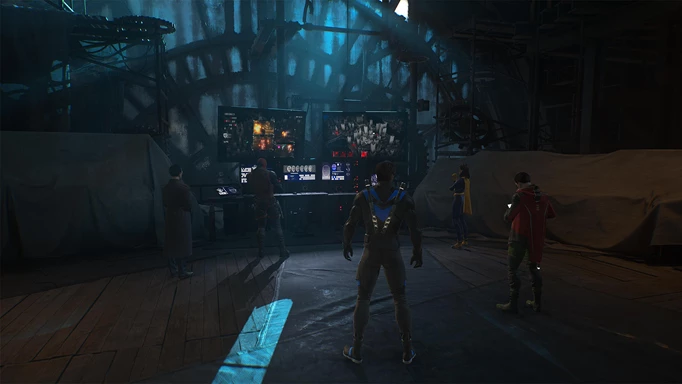
 Click to enlarge
Click to enlargeThe premise of Gotham Knights is that Batman has died, this is in all the trailers and the opening cutscene of the game so if that seems like a spoiler, best not to continue reading. Nothing major will be spoiled in this review, but we do need to cover the basics.
The Bat-family, consisting of Nightwing, Robin, Batgirl and Red Hood are blind-sided by his sudden death, and must band together to continue Batman's work. There is no mystery as to how Batman died, and this isn't a revenge plot (Batman took his killer down with him, as you would expect), but he did leave one case unsolved. An investigation that he was pursuing before he died, and a starting point for our team of heroes to begin life after Bruce Wayne.
Our four playable characters are all proteges of Batman, all at different stages of their own lives and each affected by the loss of their mentor in their own way. Nightwing, being the oldest and the first Robin, is suddenly thrust into somewhat of a leadership position. In public, Dick Grayson is seen as the closest thing Bruce Wayne had to an heir, and as such he must take over much of the public work that Bruce did. He feels the immeasurable weight of picking up where Batman left off, but as the game progresses, he learns he does not need to carry that weight alone.
Red Hood has his own issues on top of the loss of Batman. His problems are compounded by grief and he struggles to contain his anger, but he copes with the help of the team. Barbara previously lost her father, Jim Gordon, and with the loss of Batman, she is particularly hurt and frustrated that she couldn't save either of them. The youngest of the group is Tim Drake, still a teenager and still learning to be Robin. The first Robin without a Batman has a lot to learn, about being a hero and about being himself.
The plot of this game is about four superheroes working together to save Gotham from gangs, corrupt cops, and supervillains who would destroy the city. The heart of the game is four young people, grieving the loss of their mentor, a man who was like a father to each of them in their own right. The story of those four people coming together, learning to work and live together, is well-written and wonderfully portrayed. It is a great example of why these characters mean so much to so many fans.
The plot is harder to discuss without spoilers, so we will operate under the assumption that you have seen the trailers and know that much. As has been previously revealed, the game features the Court of Owls. The Court is a relatively new aspect of the Batman mythos, created by Scott Snyder and Greg Capullo during the New 52 era of DC comics, in the early 2010s. To quickly summarise, The Court of Owls is a secret society that dates back to the inception of Gotham, and the five families who founded the city. They control Gotham from the shadows, their members holding office in every level of Gotham's government, industry, and police.
The Court of Owls proved such an impactful foe for Batman in the comics because, despite everything he had done and everything he knew, they completely eluded him. They are a secret society so secret that they existed for centuries in Gotham and Batman never noticed them. In Gotham Knights, the Court of Owls is not discovered by Batman, but by his family, after his death.
Having this new threat arise after Batman dies is a great idea thematically, it cements how Gotham is completely different without him, as life always is when you lose someone you love. The loss of Batman shakes the world of the Knights and this threat that is totally new to them, something Batman could not have prepared them for, but is so fundamental to the bedrock of Gotham that they are forced to face a totally new reality in more ways than one.
Gotham By Gaslight
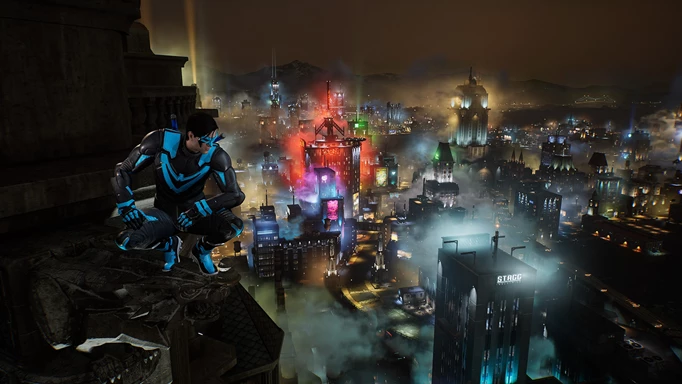
 Click to enlarge
Click to enlargeLet's talk more about Gotham, it's in the title after all. Gotham is maybe the most well-known fictional city there is, second probably only to Atlantis, or Dublin. We have seen a lot of interpretations of Gotham over the years, from Christopher Nolan's brutally realistic portrayal to the Gothic monoliths of the animated series. Gotham is generally portrayed somewhere on a scale between those two points, and Gotham Knights might be the most seamless blend of the two extremes I have ever seen.
The Gotham of this game has apartment buildings, train stations, shops and theatres like you would find in any modern city. There is a striking amount of normality, relatability and realism in this version of Gotham. However, looking across the city and taking it all in, you see giant, art deco skyscrapers with gargoyles and giant stone statues. Glowing neon signs and clouds of smoke, illuminated pink and red and green, bathe the skyline in warm pops of colour.
It is genuinely impressive that they managed to make Gotham look simultaneous fantastical and lived-in. Gameplay taking place entirely at night is a decent excuse for the lack of traffic or people, but there are still cars on the street and plenty of pedestrians walking around, constantly passing comments on the costumed crusaders passing them by.
An aspect of this depiction of Gotham that the developers pointed to is the many levels of the city, and how there are underground areas and interior spaces tucked away. A lot of this can be seen in the near-subterranean section of the city called The Cauldron, but also all throughout the city, there are nooks and crannies to be found. It fits thematically with the nature of the Court of Owls, who exist in the walls, in the floors between floors, woven into the very fabric of Gotham. This depiction of the city is huge but detailed, and fun to explore.
Exploration is a big part of this open-world game. Each in-game night, you go on patrol as one of the four Knights. You can freely roam the city, stopping crimes, finding hidden secrets, and completing objectives. Much of the main story is carried out this way, you have a primary objective as well as many side objectives and you are free to tackle them how you wish. While out and about you can encounter crimes in progress, and step in to prevent them. In true Batman fashion, preventing crime is done primarily with blunt force trauma.
While taking down gang members, you will gain evidence. The more evidence you gain, the more information you will have for your next patrol. Gotham Knights uses nightly patrols as a framing mechanic for the gameplay. At any point while you are out on patrol, you can return to the Belfry, the Knights' base of operations, and end your patrol. While at the Belfry, you can walk around and interact with the other Knights, as well as Alfred. The Batcomputer is here, as well as an evidence board giving you information on what to do next. Only while you are in the Belfry can you change character or craft new gear. Once you are ready, you can go to the door to begin the next night's patrol.
Evidence gathered on one patrol will uncover premeditated crimes for the next, planned criminal operations which are much more substantial than the random crimes you come across. These crimes can vary from investigating a murder scene, to preventing prisoner breakouts, to busting up criminal operations. Stopping these crimes will get you resources and help you level up, but what makes this system that much more interesting is the fact that you have to gather evidence to learn about these events. There are informants among the gangs that you can single out and interrogate for even more information. All these little extra steps help to make the Knights feel every bit the detectives that Batman was.
A Different-Coloured Batman Costume Each Night!
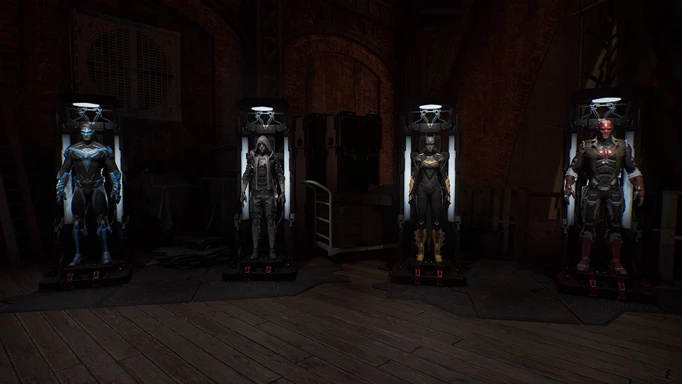
 Click to enlarge
Click to enlargeA couple of terms might have jumped out at you during that last part. Specifically, the mention of crafting, resources, and levelling up. Yes, Gotham Knights is an action RPG, it is the kind of game that has level progression and gear for you to acquire, craft, and equip. These words may send a chill down some players' spines, still scarred from their ordeals with Marvel's Avengers. Thankfully, we live in a post-Avengers world and clearly, the developers recognised that. While these systems do exist in the game, they are very minimal.
As you play you gain experience and level up. Each time you level up, you gain AP, which are points than can be spent on new skills. Your level carries across all four characters so no need to play catch up, but their skills are separate. Each character has their own skill tree, with skills tailored to their strengths. Chose the skills that appeal to you the most, and that fit your playstyle with the character.
In terms of gear, each character has three items; their suit, their melee weapon, and their ranged weapon. You equip one of each, and as you play through the game, you will earn a bunch of these. If you have zero interest in min-maxing your stats, you needn't worry. Whenever you return to the Belfry, open up your Gear menu. Look at your suits, is there one that's lit up green? That means it's better, so equip it. If it's red, don't bother. Rinse and repeat for your weapons, simple as that.
This clears the way for the most important aspect of the game, cosmetic customisation. Each hero has over a dozen different suits, and you will be swapping through them like there's no tomorrow. Each suit can be customised, you can change the cowl, the logo, the arms and the boots. You can also apply any of your unlocked colour schemes. If your newest and most powerful suit doesn't appeal to you, you can apply another unlocked suit as a transmog. Unfortunately, transmog suits cannot be customised as the base suit can, but you still get plenty of options. Besides, who doesn't like a little variety in their wardrobe?
You'll notice a distinct lack of mention of microtransactions there, as there are none. You do not have to pay for costumes, you don't have to pay money to get more resources. This is not that type of game. There is a DLC pack called the Visionary Pack that can either be bought separately or is included with the more expensive versions of the game, which includes the Beyond suits and the KnightWatch suits, but that is it. Everything else is included in the base game, no hidden charges or anything like that.
Last Knights On Earth
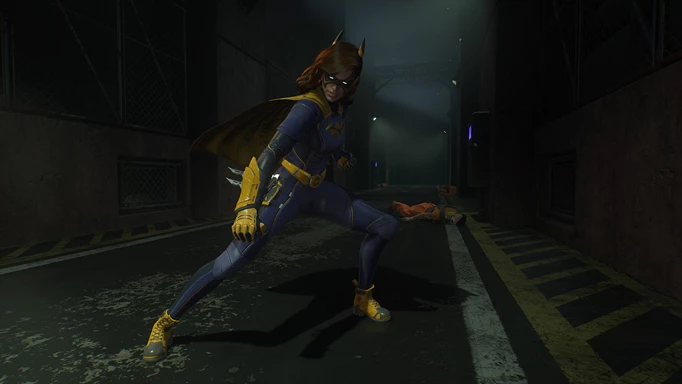
 Click to enlarge
Click to enlargeThat's all well and good, but let's get into the nitty gritty, the action of this action RPG. You can play as any of the four Knights, and can change between patrols. Each Knight has their own style and their own strengths.
Nightwing is fast and agile. He moves faster and jumps higher than the others, and his combat style reflects this. He fights with his Escrima sticks and is great at taking on groups of enemies at once. Batgirl is especially good at one-on-one combat, she is really tough but also employs a lot of gadgets and tech. Red Hood is the best at ranged combat, using his dual pistols as his primary weapon. He is also the brute strength of the group, throwing enemies around like they are nothing. Robin is the stealth specialist, while no slouch in a fight with his bo staff, he is at his best when he is picking off enemies one by one, from the shadows.
The truly remarkable thing about the design of these characters is, there is nothing that any of them can't do. Red Hood is perfectly capable of stealth, Robin can take on a huge boss by himself and win. There is a delicate balance to be struck when crafting characters to have specializations, without making them useless in other situations. Often times in games that attempt this, they usually end up with one character who is better than the rest, or making the differences so negligible that it doesn't matter who you pick.
In Gotham Knights, you're never in a situation you cannot handle because you chose the wrong character, but each character has things they do better than the others, making it all the more satisfying to make best use of their strengths. Some enemies are best dealt with from range, which any character can do, but Red Hood does it best. Sneaking into a facility full of cameras, turrets and pressure plates is a job any of the Knights can pull off, but Batgirl's Digital Ghost ability makes her invisible to cameras and sensors, so she can just waltz on in. Fundamentally they can all do the same things, but in those situations where one character shines over the others, you will be so glad you picked them.
Combat design is pretty exceptional, and another point on which we need to circle back to the Arkham games. As is seemingly becoming the standard for superhero games, Gotham Knights draws heavy inspiration from the Arkham series for its combat mechanics. Much like how Marvel's Spider-Man did, but there are some cues taken from ol' Spidey as well. Combat is largely about timing, landing hits on enemies while dodging their incoming attacks. You have melee and ranged attacks on a button each, and light and heavy versions of both. Which attacks to use and when is determined by the wide variety of enemy types, much like how Spider-Man did it.
You have regular melee enemies, larger and tougher enemies, enemies with guns, enemies with drones, enemies that throw bombs, enemies who can heal and even revive other enemies, there is a long list of types of enemies in this game. You are kept well and truly on your toes with the various foes you face, even between the different gangs and organisations there are more specific enemy types. With so many different opponents and differing tactics for each of them, combat never has time to get stale or boring.
On top of your basic attacks, each of the Knights has eight momentum abilities. Momentum is a meter that builds up as you fight, and is used up by activating these abilities. The abilities are a big factor in what makes each character different in a fight, and these momentum abilities really flesh them out as fighters. Without the abilities, there is as much depth to this combat as the Arkham games had. They even brought over the timing mechanic of that game, where timing your button presses with your hits landing will have your follow-up attacks happen faster and do more damage, something that feels amazing when you get on a roll. With these abilities and the variety of characters, Gotham Knights has maybe the best combat of any superhero game.
The Brave And The Bold
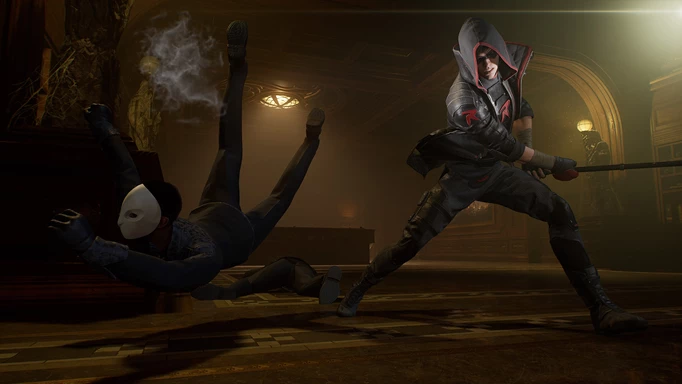
 Click to enlarge
Click to enlargeEach of the Knights is a viable choice regardless of the mission or situation, so choosing them really is down to personal preference. Whoever you play as, you are still playing through the same story, completing the same events. What is honestly incredible is how well the story caters to each character. If you have ever played an RPG where you get to create your own character, you will be familiar with the typical allowances games make to accommodate player choice. Other characters never refer to your character by name, or only by a title or nickname. Cutscenes and story beats bend over backwards to accommodate your choices.
Not so in Gotham Knights. The sheer amount of work that went into this game to make sure that every cutscene, every dialogue, and every possible situation played out perfectly naturally regardless of who you play as. When you face off against Harley Quinn as Batgirl, and she calls you Bratgirl the whole time, and makes references to how it's just us girls, you feel like you're playing a Batgirl game. Then, you are talking to Talia Al Ghul as Red Hood, and she refers to him as Jason and makes mention of how they brought him back with the Lazarus Pit, and suddenly it's Red Hood's story.
I was talking to a colleague about this who is also playing the game, and we both played through the same scenarios, he was Batgirl and I was Red Hood, and we both felt the same thing, that it was that character's story and no one else's. If you have always wanted a Nightwing game, or a Batgirl game, then play Gotham Knights and never switch characters. The rest of the cast works perfectly well as your support, chatting to you over the radio as you play. It's an exceptional feat of game design, and something the game deserves heavy praise for.
That said, there are some issues raised by this design. There are a handful of moments where it feels a little too much like just your chosen character's story. As not only can you play as any of the characters in any scenario, but you can also play co-op, meaning that designing scenes with multiple characters appearing together is nearly impossible to account for all potential permutations. Crafting four bespoke versions of almost every scene in the game was probably enough work, just accounting for two-player co-op would shoot that number up to twenty. As a result, this story about a team coming together has some moments where it feels like the whole team should be there, but they can't be, it is just your chosen Knight.
Also notable are some of the aftermath conversations. Something big just happened, and you played through it as one of the four, but in the cutscene after where the Knights discuss the event, they are noticeably ambiguous about who did what, because it could have been any of them depending on your choice. Again, this is a bit jarring, but no more than every character in an RPG only referring to you as The Chosen One, or something like that. It is a small concession for what is an impressive amount of character-specific moments.
Holy Sub-Par Frame Rates, Batman!
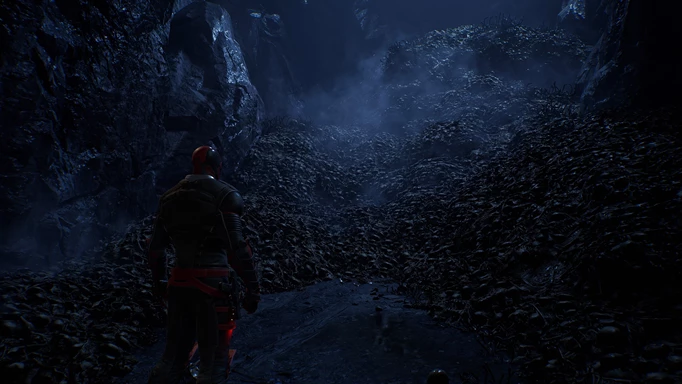
 Click to enlarge
Click to enlargeTo speak of the game more mechanically, it generally ran well for me but with some noticeable issues. Something that has caused a degree of controversy is the fact that the game is limited to 30 frames per second on console, despite being exclusively available on PS5 and Xbox Series S and X. Seemingly, the visual fidelity of the game and its seamless co-op features are the reason why higher frame rates are not offered on the console version.
An action game that doesn't do 60fps in this day and age feels archaic, but the game does still play perfectly well when it is locked at 30. On PC, the game maxes out at 1080p and 60 frames per second, which is equally baffling. The issue seems to be optimisation, with inconsistent frame rates and occasional but noticeable texture pop-ins. For a game that skipped out on last-gen consoles, it sure does feel like a PS4 game. Mileage may vary on how well it runs for you, so do your homework before committing to a purchase.
There are some other small points of contention, the game lacks any form of lock-on for example. That coupled with a camera that can get a little too close behind the character and you get some bothersome moments trying to see what you are doing. Other than that, there isn't much else to hold against the game. All these issues are ones that could feasibly be righted in a future update, but we can't give points for that. The problems this game has all feel like they could have been fixed with another few months in the oven, but this is the game we got and all in all, it's not bad. Underneath all of these performance issues, it might even be great.
Sometimes, The Truth Isn't Good Enough
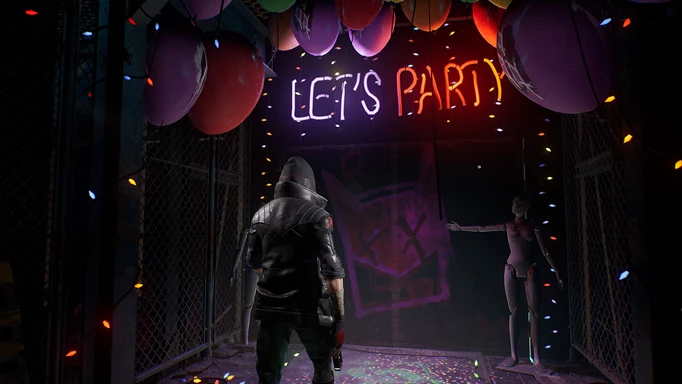
 Click to enlarge
Click to enlargeThe combat is satisfying, the characters are fun and interesting, and the story is good if a bit short in some places. The game is simply let down by technical hitches, problems that feel like they should have gone out with the last generation. Making games is obviously hard and there will always be challenges, there isn't going to be a day when suddenly games just stop having bugs and technical problems. It's just the particular way that this game stumbles feels very 2015, very last-gen, and beneath the evident talent that the game's creators display in the excellent combat and narrative design.
Seemingly, I was quite lucky. That colleague I mentioned earlier detailed his experience with the game to me, and it sounds like he had a much worse time than I did, despite playing on the same console. Where I had the occasion frame dip or texture pop-in, he experienced massive drops in the frame rate during cutscenes, combat, and other crucial parts of the game. This makes reviewing the game tricky for me because, despite my relatively smooth experience with the game, I cannot guarantee the same for others. There is such a fantastic game in here, but it has some issues that need to be ironed out first.
For big-time fans of Batman stories, I can give this game a wholehearted recommendation. Maybe not on day one, but I would be surprised if the problems in this game are not rectified in short order. For others, folks who aren't as interested in the comics or the characters, this could be hit or miss for you. The heart of Gotham Knights is truly great, a fun open-world co-op game and an excellent action experience when it is firing on all cylinders. However, the risk of the engine stalling and the game stuttering to a halt might be too much for all but the most devoted fans.
7/10
Reviewed on PlayStation 5. Code provided by the publisher.
